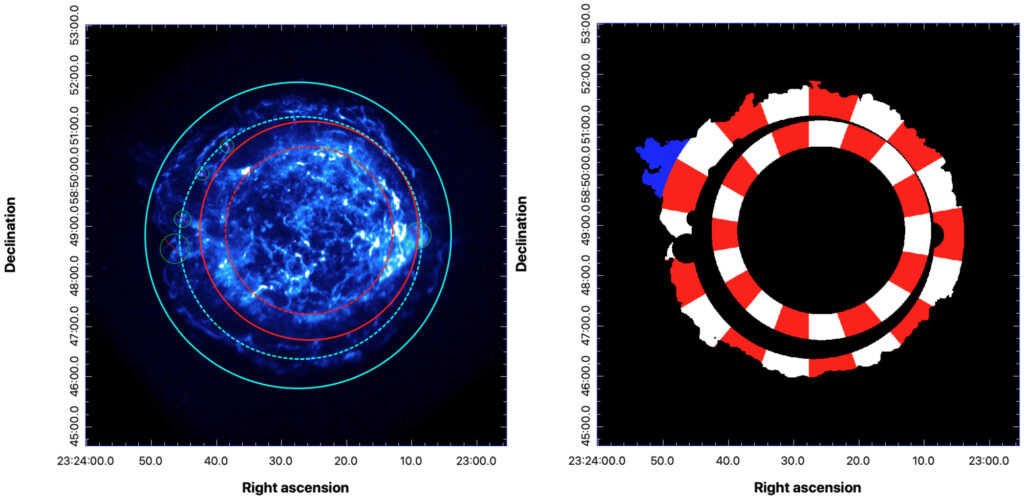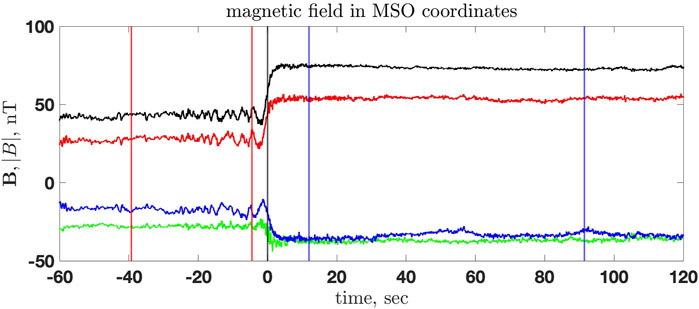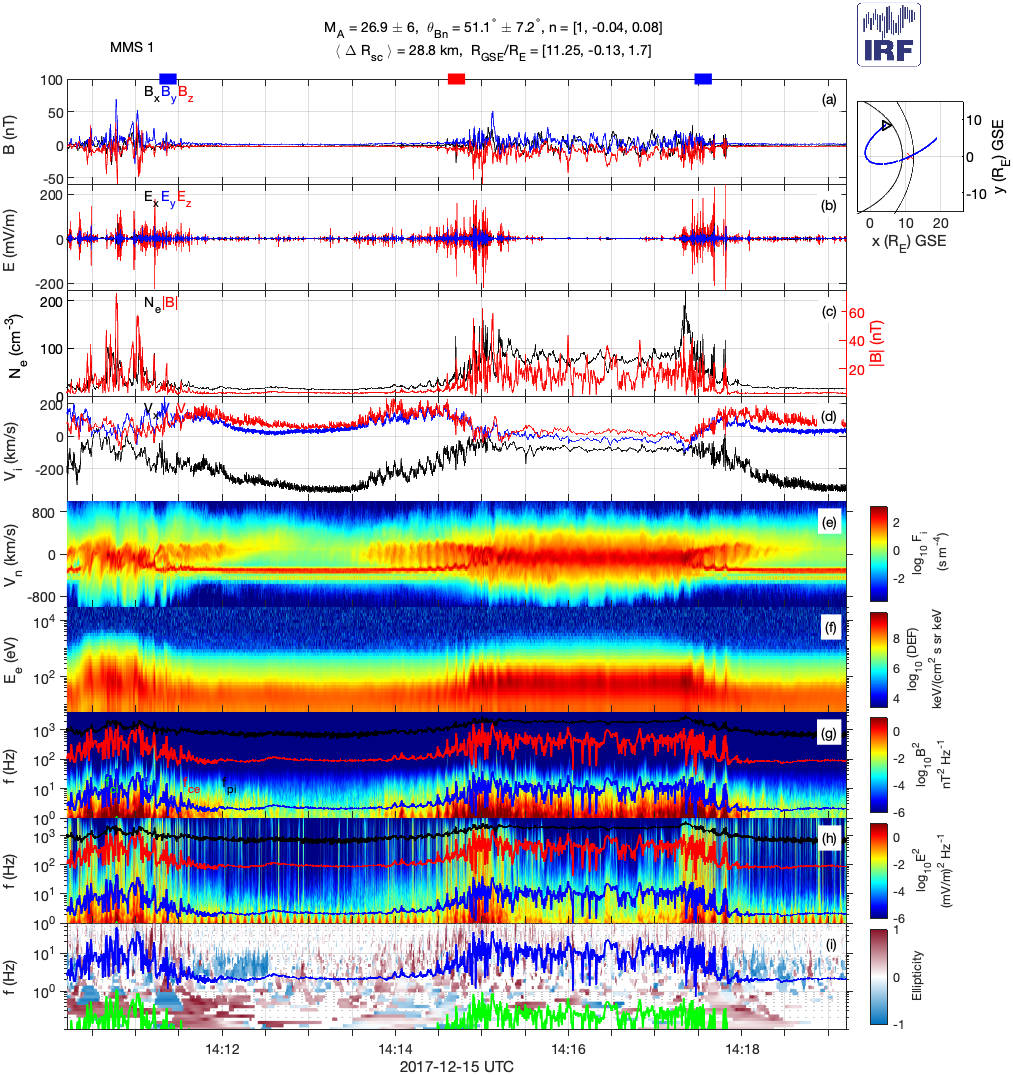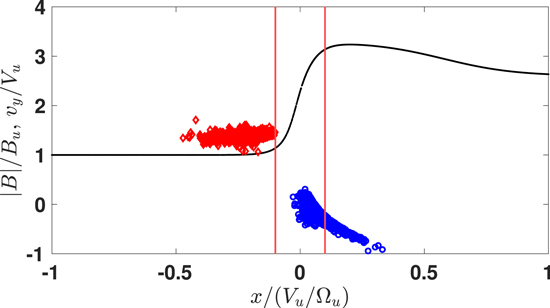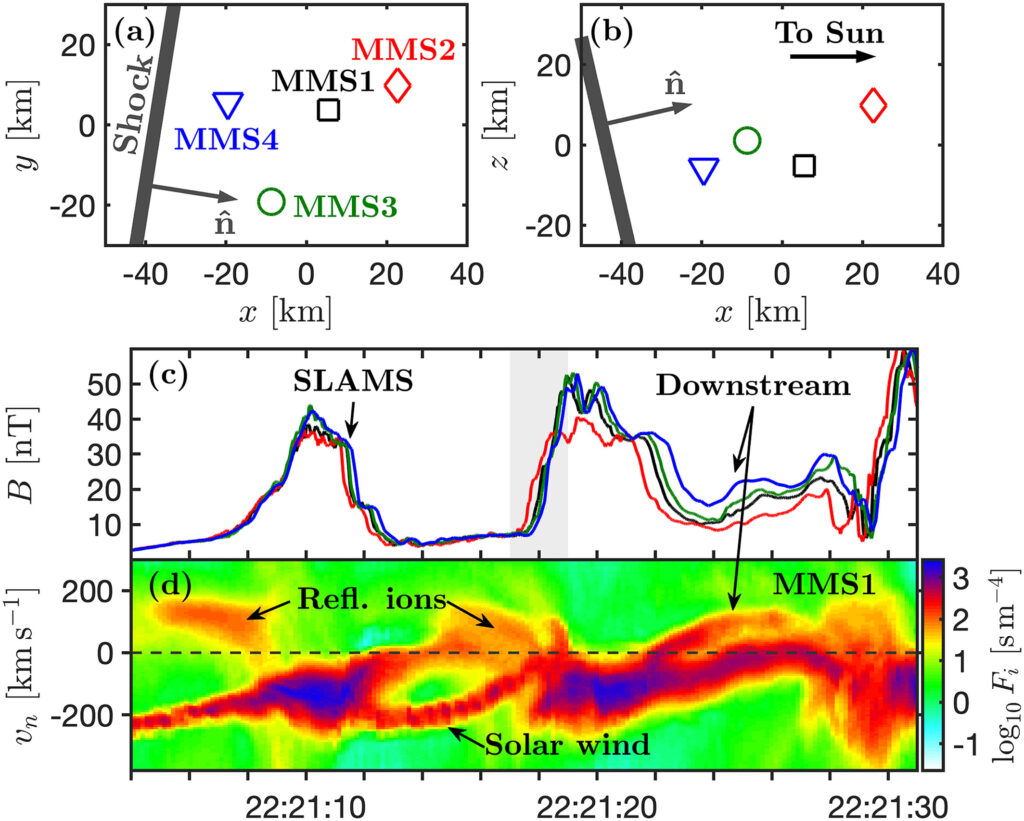This study aims to investigate the outbound Venus bow shock crossing measured by Solar Orbiter during the first flyby. We study the complex features of the bow shock traversal in which multiple large amplitude magnetic field and density structures were observed as well as higher frequency waves. Our aim is to understand the physical mechanisms responsible for these high amplitude structures, characterize the higher frequency waves, determine the source of the waves, and put these results into context with terrestrial bow shock observations.
The Venus bow shock at a moderately high Mach number (∼5) in the quasi-perpendicular regime exhibits complex features similar to the Earth’s bow shock at comparable Mach numbers. The study highlights the need to be able to distinguish between large amplitude waves and spatial structures such as shock rippling. The simultaneous high frequency observations also demonstrate the complex nature of energy dissipation at the shock and the important question of understanding cross-scale coupling in these complex regions. These observations will be important to interpreting future planetary missions and additional gravity assist maneuvers.
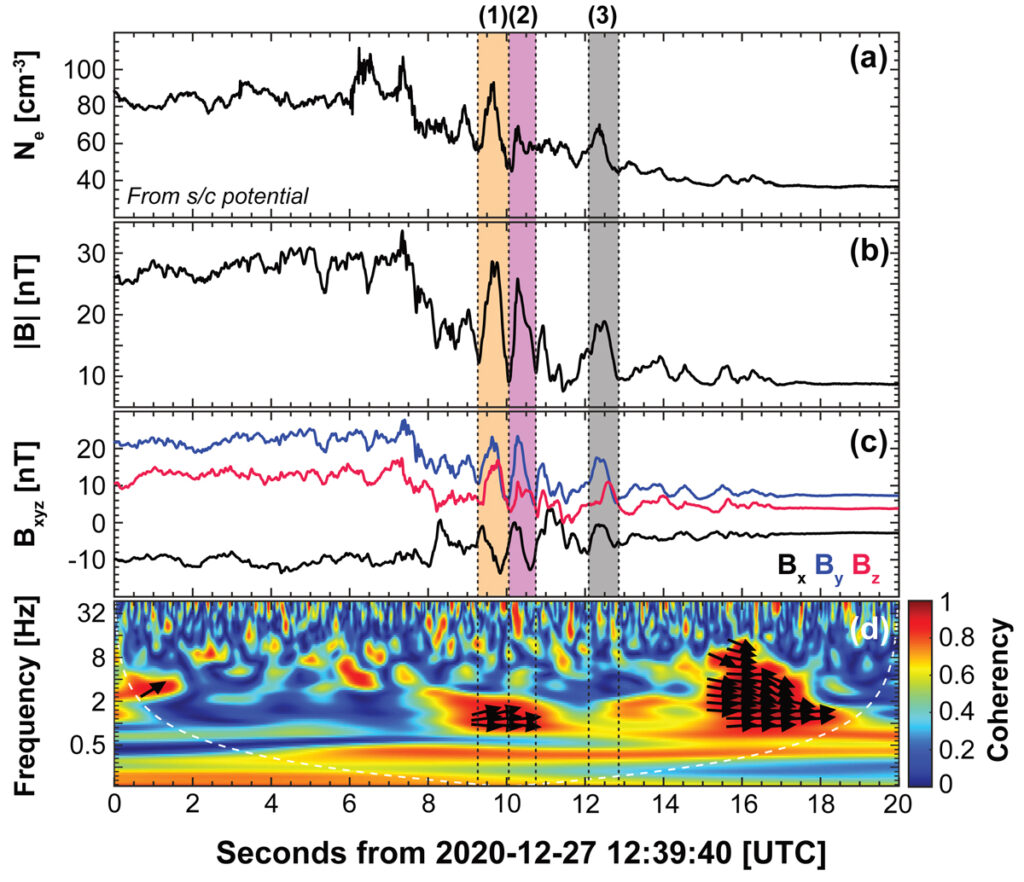
Full Article:
Dimmock, A. P. (SHARP), Khotyaintsev, Yu. V. (SHARP), Lalti, A. (SHARP), Yordanova, E., Edberg, N. J. T., Steinvall, K., Graham, D. B. (SHARP), et al. (2022). Analysis of multiscale structures at the quasi-perpendicular Venus bow shock – Results from Solar Orbiter’s first Venus flyby. Astronomy and Astrophysics, 660, doi: 10.1051/0004-6361/202140954
License: CC BY 4.0






